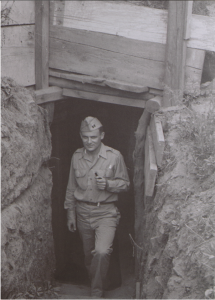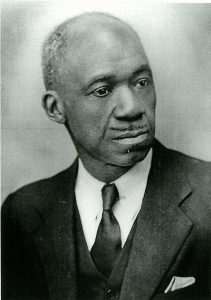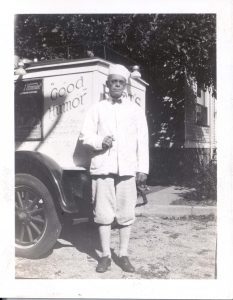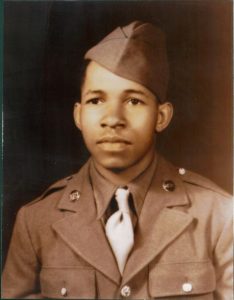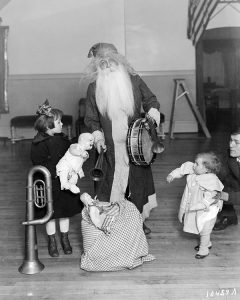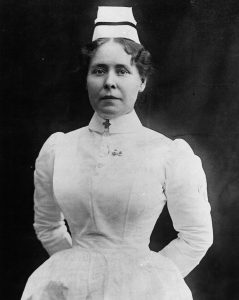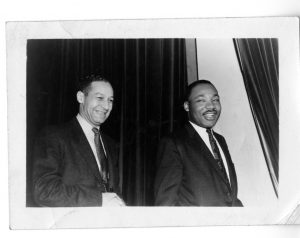It’s October and you know what that means- it’s American Archives Month! This year’s annual SOA poster to celebrate the event in Ohio recognizes “hometown heroes” who have made a difference in their communities and the world. Ten photos were chosen as winners but only a selection were included in the final poster. You can read the stories behind all ten winning images below. Congratulations to the winners and please consider sharing something from your own collection when the call goes out for next year’s poster.
Bowling Green State University Center for Archival Collections
Ella P. Stewart (1893-1987) was among the first practicing African American woman pharmacists, a civil rights and women’s rights activist, and a respected community leader in Toledo, Ohio. She was elected president of the Ohio Association of Colored Women in 1944 and served as president of the National Association of Colored Women from 1948-1952. In 1952 she was also chosen to be a delegate to the International Conference of Women of the World, and in 1963 was appointed commissioner of the United Nations Education Scientific and Cultural Organization (UNESCO). The Ella P. Stewart Academy for Girls in Toledo is named in her honor.
Case Western Reserve University Archives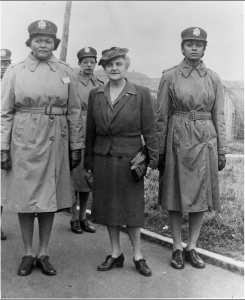
Frances Payne Bolton reviews a Negro Nursing Unit, ca. 1940-1945.
Frances Payne Bolton was the first woman representative from Ohio in Congress. A particular interest of hers was nursing. She provided funds for the School of Nursing at Western Reserve University (which was named in her honor in 1935).
Among her accomplishments in representing Ohio, she was the sponsor of The Bolton Act which opened up the nursing profession to all women. It created the U.S. Cadet Nurse Corps.
Frederick C. Robbins in Italy during World War II. Ca. 1942 – 1945.
Dr. Robbins served in Italy and North Africa as Chief of the Virus and Rickettsial Disease Section of the 15th Medical General Laboratory. He received a Bronze Star and was discharged with the rank of Major.
In 1954 he received the Nobel Prize in Medicine with Drs. John F. Enders and Thomas H. Weller for their “discovery of the ability of poliomyelitis viruses to grow in cultures of various types of tissue.” This research led to the Salk and Sabin polio vaccines.
He continued to work on eradicating polio throughout his life and continued to work on research in other diseases such as HIV/AIDS.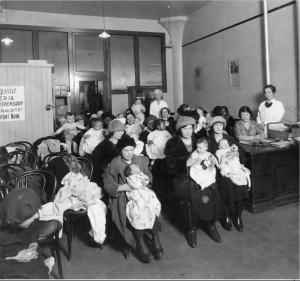
Infant Welfare Clinic, University Public Health Nursing District, ca. 1917—1929.
The Public Health Nursing Program at Western Reserve University provided training for student nurses in caring for the community.
Clark County Historical Society
Sully Jaymes was Springfield’s first African-American lawyer, opening his practice in 1903. He was one of Springfield’s most tireless activists for equal rights. Jaymes represented primarily black clients, including Richard Dixon, the lynching victim of the 1904 riot, and other African-Americans indicted in the race riots of 1906 and 1921. Jaymes offered his services free of charge if clients were unable to pay. His commitment to securing equal rights under the law for black people by far took precedence over money.
Mahoning Valley Historical Society
Harry Burt, inventor and manufacturer of the Good Humor ice cream bar of Youngstown, OH. He also pioneered the use of an ice cream truck and the “Good Humor Man” uniformed delivery/salesman of the Good Humor ice cream. The location for the invention of and first manufacture of the product is now our Tyler Mahoning Valley History Center.
George C. Blake, a World War II veteran from Worthington, Ohio, was awarded the Silver Star Medal in 1945 for his courageous actions on December 9, 1944 near Norville Les Vic, France. As a Private First Class in the 761st Tank Battalion, he worked through the night under intense artillery and mortar fire to administer first aid and evacuate the wounded. His Silver Star Medal citation states, “Private First Class Blake’s courageous action and devotion to duty exemplifies the highest tradition of the Armed Forces.” The 761st Tank Battalion was the first African American tank unit of the United States Army; it was not until the Carter Administration that a Presidential Unit Citation was issued to the 761st for extraordinary heroism.
University of Akron
Photograph of C.W. Seiberling as Santa Claus, 1919. C.W. Seiberling co-founded with his brother F.A. The Goodyear Tire & Rubber Company in Akron, Ohio, which eventually created millions of jobs for people in Ohio and around the globe. Known as “the heart” of the company and a pioneer in the rubber industry, he is best known for his philanthropic work. C.W. Seiberling devoted countless hours and resources toward helping the under-privileged, especially children. He was an ardent supporter and financer of the Edwin Shaw Sanatorium, Akron Children’s Hospital, Akron’s Community Chest, the YWCA, both Girl Scout and Boy Scout movements, and the Handicapped Action Group, and donated generously to numerous churches and civic organizations regardless of race, creed, or color. Image from the Goodyear Tire & Rubber Company Records, The University of Akron, Archival Services.
Photograph of Mary Gladwin, ca. 1889.
Mary Gladwin of Akron, Ohio served as a nurse in the Spanish-American War, the Philippine insurrection, the Russo-Japanese War, and World War I, where she served as supervisor of nurses at the American Hospital in Belgrade, Serbia. She also played a key role in the Red Cross relief efforts in Dayton during the 1913 flood. Gladwin helped found the Summit County Chapter of the Red Cross and the Visiting Nurses Association in Akron. She was the first woman awarded the Florence Nightingale Medal for Nursing and the School of Nursing building on The University of Akron campus is named in her honor. Image from the Mary Gladwin Papers, The University of Akron, Archival Services.
Theodore M. Berry was a pioneering civil rights activist and politician from Cincinnati, Ohio, who from the 1930s to the 1990s was instrumental in National Association for the Advancement of Colored People (NAACP) litigation, federal civil rights administration, and civic participation. Berry attended the University of Cincinnati College of Law, and in 1939 was appointed as Assistant Prosecutor of Hamilton County, the first African American to hold the post. Berry was elected to Cincinnati City Council in 1965, and later served in the Johnson administration. On December 1, 1972, Berry was sworn in as Mayor, making Cincinnati history as the first African American to hold the position.
If you want to continue your Archives Month celebrations, use SOA’s Passport to the Past to find out more about historical organizations throughout the state and visit one near you!
Last Updated on October 16, 2020 by janet_carleton


